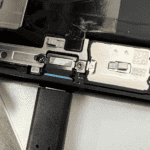Replacing spark plugs and ignition coils is a common maintenance task for many vehicles. These components work together to ignite the fuel in your engine’s cylinders. While it’s not always necessary to replace both at the same time, doing so can often improve your car’s performance and prevent future issues.
Many car owners wonder if they should change their ignition coils when installing new spark plugs. The answer depends on several factors. Spark plugs typically need replacement every 30,000 to 100,000 miles. Ignition coils usually last longer. But if your coils are showing signs of wear or your car has high mileage, it may be wise to replace both components together.
Replacing spark plugs and ignition coils at the same time can save you time and labor costs in the long run. It ensures all parts of your ignition system are in good condition. This can lead to better fuel efficiency and smoother engine operation. Consider your car’s age, mileage, and current performance when deciding whether to replace both components.
Key Takeaways
- Spark plugs and ignition coils have different lifespans but work together in your car’s ignition system
- Replacing both components at once can improve performance and prevent future issues
- Consider your vehicle’s age, mileage, and current condition when deciding on replacement
Understanding Ignition System Components
Ignition coils and spark plugs are key parts of a car’s ignition system. They work together to start the engine and keep it running smoothly. When these parts wear out, they can cause engine problems.
Role of Ignition Coils and Spark Plugs
Ignition coils change low voltage from the battery into high voltage. This high voltage is needed to create a spark. The spark plugs use this voltage to make a spark in the engine’s combustion chamber. This spark ignites the fuel and air mix which powers the engine.
Many modern cars use a coil-on-plug system. This means each spark plug has its own ignition coil. This setup helps the engine run better and use less fuel.
Spark plugs have a specific lifespan. They usually need to be changed every 30,000 to 100,000 miles. The exact time depends on the car and type of spark plug.
Common Signs of Coil and Plug Issues
Bad ignition coils or spark plugs can cause several problems:
- Engine misfires
- Rough idling
- Poor fuel economy
- Check engine light turning on
- Trouble starting the car
A misfire happens when fuel doesn’t burn right in one or more cylinders. This can make the engine shake or lose power.
If you notice these signs, it’s time to check your ignition system. Bad spark plugs are often the cause. But coils can fail too. It’s a good idea to test both when you have ignition problems.
Regular upkeep of these parts helps keep your car running well. It can also stop bigger engine issues down the road.
Best Practices for Coil and Plug Replacement
Proper replacement of ignition coils and spark plugs is crucial for engine health. It’s important to know when to replace these parts and how to do it right.
When to Replace Ignition Coils and Spark Plugs
Spark plugs should be replaced every 30,000 to 100,000 miles. This varies by car model and plug type. Ignition coils often last longer. But they may need changing if the engine misfires or runs rough.
Signs it’s time to replace:
- Check engine light is on
- Engine lacks power
- Poor fuel economy
- Rough idling
A mechanic can check for misfires with a scan tool. They can also test coils with a multimeter.
Executing the Replacement Procedure
To replace coils and plugs:
- Let the engine cool down
- Remove the engine cover
- Unplug the electrical connectors
- Take out the old coils and plugs
- Check for oil or debris in spark plug wells
- Clean the wells if needed
It’s best to replace one coil at a time. This prevents mix-ups. Use a torque wrench to install new plugs. This stops over-tightening.
Apply a thin layer of dielectric grease to the inside of coil boots. This helps prevent moisture issues.
Ensuring Proper Installation
Correct installation is key for good performance. Here are some tips:
- Don’t cross-thread spark plugs
- Use the right socket to avoid damaging plugs
- Tighten plugs to the correct torque spec
- Make sure coils click into place firmly
- Double-check all electrical connections
After install start the engine. Listen for any odd noises. Take the car for a short drive to check for smooth running.
Consider using OEM parts for best results. Aftermarket coils may not always perform as well. Keep old parts until you’re sure the new ones work right.
Frequently Asked Questions
Ignition coils and spark plugs work together in your car’s engine. Many people have questions about when to replace these parts. Here are some common questions and answers.
Can ignition coils be replaced independently of spark plugs?
Yes ignition coils can be replaced on their own. You don’t always need to change spark plugs at the same time. But it’s often a good idea to replace both if they’re old.
What are common symptoms indicating issues with ignition coils or spark plugs?
Bad coils or plugs can cause engine misfires. You might notice:
- Rough idle
- Poor acceleration
- Check engine light
- Reduced fuel economy
How often should ignition coils and spark plugs be replaced together?
Most cars need new spark plugs every 30,000 to 100,000 miles. Coils often last longer. Check your owner’s manual for the right schedule for your car.
What are the potential benefits of replacing both ignition coils and spark plugs?
Changing both parts at once can:
- Improve engine performance
- Boost fuel economy
- Prevent future breakdowns
- Save time on labor costs
What is the estimated cost for replacing an ignition coil and spark plug set?
Costs vary by car make and model. For most cars expect to pay:
- $50 to $200 per coil
- $15 to $100 for a set of spark plugs
- 1 to 3 hours of labor
Can a faulty ignition coil cause damage to spark plugs?
A bad coil can damage spark plugs over time. It may cause:
- Uneven wear
- Electrode damage
- Shorter plug life
That’s why it’s often smart to replace both if one part is failing.






